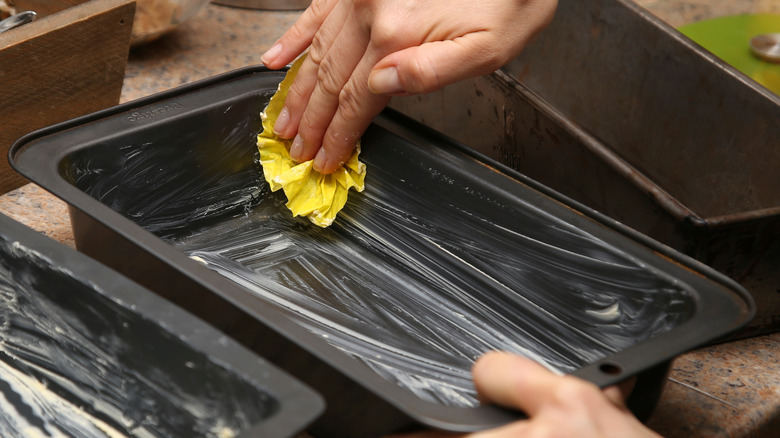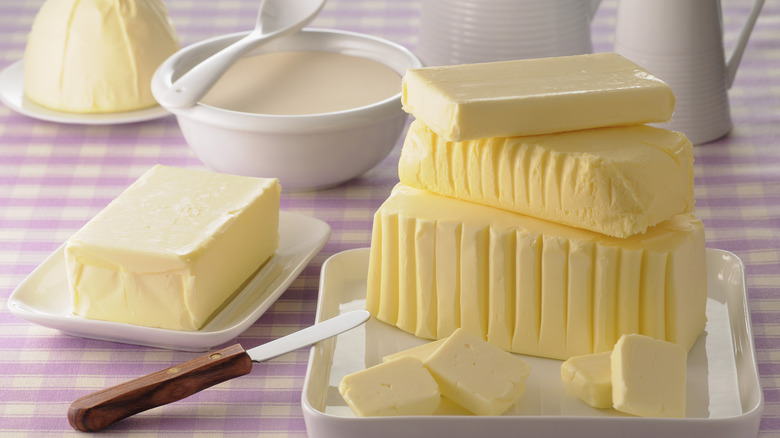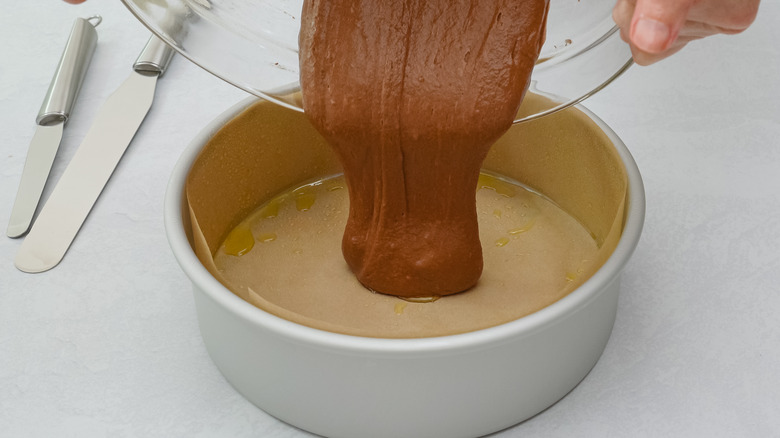Why You Should Never Grease Your Cake Pan With Salted Butter
The majority of baking recipes list unsalted butter in the ingredients, as salted butter can negatively impact the flavor and texture of the finished product. Salted butter should also be avoided when it comes to greasing a cake pan, as many bakers claim that salted varieties can actually cause the cake to stick to the pan. A hard-to-remove cake won't adversely affect the flavor of the baked good, but it will ruin the aesthetic appeal of your beautiful treat.
Like many baking tips, there's a bit of dispute regarding the veracity of this hack. While it's impossible to pinpoint the exact origin, bakers were warning against using salted butter for pan greasing as far back as 1959 (according to The Baltimore Sun). And although many modern bakers are in the unsalted camp, others recommend using salted butter for greasing pans when making baked goods. Others still claim that butter is no good for greasing and that you should use shortening instead. Despite these disagreements, it's always advisable to follow cake recipes to the letter. That means you'll most likely have unsalted butter on hand, which can then be used to grease the pan for baking.
Key differences between salted and unsalted butter
On the surface, it might seem like the difference between salted and unsalted butter is relatively obvious: one has salt added while the other doesn't. However, there's more than meets the eye when comparing these two common ingredients. Adding salt to butter makes it last longer, as salt is a highly effective preservative. While you can rely on the fact that both types of butter are fresh when purchasing them at your favorite grocery store, there's usually more turnover when it comes to unsalted brands simply because they won't last as long on store shelves.
Another key difference is the water content of each type of butter. Salted butter contains more water than unsalted versions, which is a key factor in why so many cakes list unsalted butter in their recipes. Too much water can disrupt the gluten formation process, which in turn can prevent the desired texture from developing when it comes to cakes. Along with using the recommended butter when incorporating ingredients and preparing cake pans, using the correct greasing technique is also crucial.
More great greasing tips
To effectively grease a cake pan to ensure easy release when the baked good is finished, start by cleaning the pan. Next, you'll want to dry the pan thoroughly with a clean towel, take your stick of unsalted butter, and rub it all over the pan's interior. You want to cover every possible area, so be sure to apply butter liberally. Once buttered, sprinkle a small amount of flour in the buttered pan, taking care to disperse it evenly over the interior.
Flour is an ideal non-sticking agent, as it establishes a fortification against the cake batter and the pan. Adding it, along with unsalted butter, will improve the odds that your cake comes out of the pan in one piece. Layering the pan with parchment paper is another good option, and you can use it in conjunction with butter and flour. In this case, apply butter to the pan, then line it with parchment paper. Next, cover the parchment paper with butter and apply flour evenly. When the cake is finished, you can easily remove it by gently lifting the parchment paper out of the pan.


